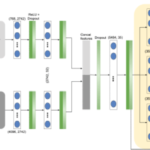2025-04-07 中国科学院(CAS)
<関連情報>
- https://english.cas.cn/newsroom/research_news/chem/202504/t20250407_909496.shtml
- https://pubs.acs.org/doi/10.1021/jacs.4c18730
生物に着想を得た塩化物支援タンパク質チャネル:酸性廃水からの持続可能なエネルギー採取のためのプロトン輸送の強化 Bioinspired Chloride-Assisted Protein Channels: Enhancing Proton Transport for Sustainable Energy Harvesting from Acidic Wastewater
Wenxiu Jiang,Xuan Ding,Zihao Huang,Xiaochen Feng,Meiling Wang,Xinyue Zhang,Shuyu Ying,Huanting Wang,Jun Gao,Ying Zhu,and Lei Jiang
Journal of the American Chemical Society Published: April 1, 2025
DOI:https://doi.org/10.1021/jacs.4c18730
Abstract

Highly efficient proton transfer in biological processes has driven the pursuit of synthetic analogs; however, replicating high proton permeance in natural systems remains a significant challenge. Herein, inspired by the function of the ClC-ec1 protein, we report the design of Cl–-assisted proton transport channels within a hybrid membrane composed of covalent organic frameworks (COFs) integrated with aramid nanofibers (ANFs). By leveraging buffer layer-mediated interfacial polymerization and the flocculation behavior of ANF in aqueous environments, we establish robust hydrogen-bonding interactions between COFs and ANFs. The hydride material enables Cl– binding, significantly accelerating proton transport in a manner similar to that of the ClC-ec1 protein channel. In the presence of a small concentration of Cl– ions (0.1% of the proton concentration), the proton permeation rate is enhanced approximately by 3 times, reaching 9.8 mol m–2 h–2. Notably, the membrane facilitates sustainable osmotic power generation from acidic wastewater, delivering an output power density of 434.8 W m–2. Theoretical calculations revealed that ANF preferentially binds Cl–, promoting proton hopping and lowering the energy barrier for proton transport. This study establishes a new paradigm for bioinspired ion-assisted proton transport, presenting an approach for sustainable energy harvesting from acidic wastewater.



